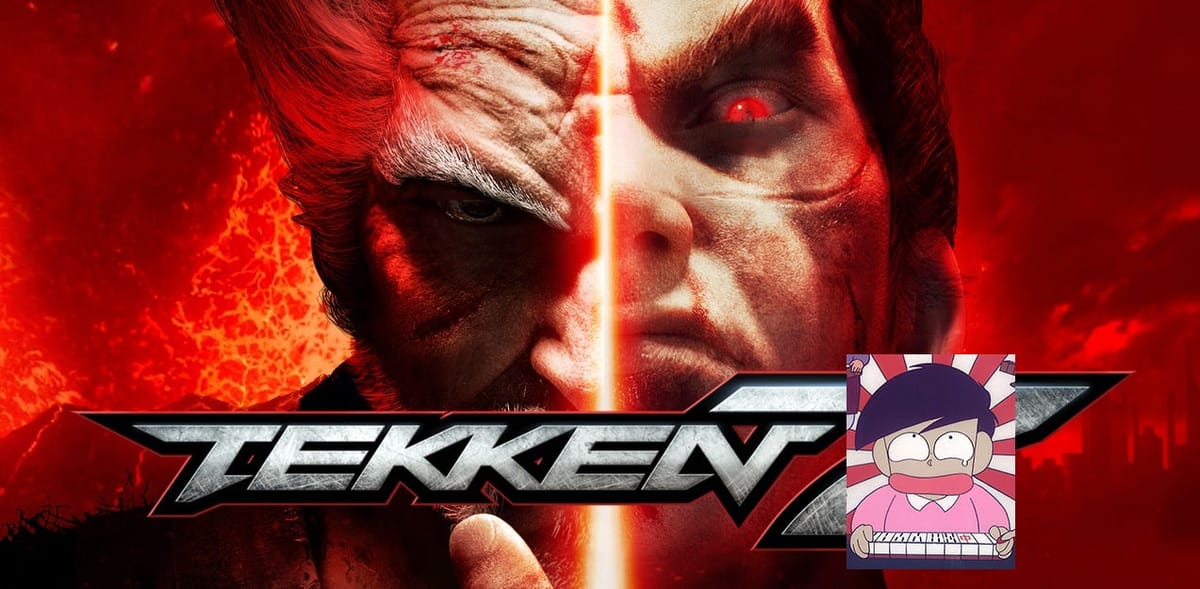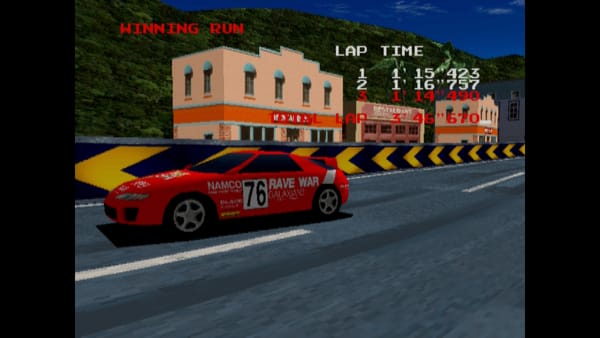Both Tekken and mahjong have weird, important, precious rules
Life and games are learning experiences

Games are alive. We give them life. Frequently it happens by accident.
Recently I explained intermediate Tekken strategy to a game developer friend who was getting his grips on the game. When I was done, his big question was “why?” Why would it work like that? Why has it worked like that for over 20 years now?
Sometimes game mechanics stumble into something that seems really unintuitive— not how you would build a game from the bottom— but that unintuitive element works despite itself, consumes the game’s identity, and makes it a classic that stands the test of time. I’m going to discuss two such games, and their quirks.
Tekken and backdashing
I thought I understood Tekken because I already understood Virtua Fighter, and that the mechanical differences were minor quibbles that I would be able to quickly learn and adjust to.
I was completely wrong. Thanks to some ancient, long-lived design choices, Tekken is a totally unique evolutionary branch of the genre that Virtua Fighter created. It requires entirely different tactics to win. It was only once I figured out how I was supposed to be playing Tekken that I found the real fun of the game.1
Let’s talk about movement. In Virtua Fighter and in most 3D fighting games, the quick dash allows us to move in or escape quickly, at the cost of dropping our guard. The weakness of a dash is that you’re wide open. In Virtua Fighter it is common to pre-emptively counter a retreating opponent with a long-range kick as they move back, hitting them hard in the stomach and knocking them off balance.
(Awe-inspiring Virtua Fighter 5 match from Beat Tribe 2019 featuring risky moves, big reads, and an incredible comeback.)
For every action in Virtua Fighter, there is a strong counter. Retreat and evasion can go very wrong, so players are more likely than in Tekken to mix it up at close range. Contrary to reputation, VF is a fast game with constant decisive moments and high damage. The player who makes the best read on what their opponent is about to do and counters them appropriately will definitely win.
In Tekken, that whole system of risk and reward does not apply to back-dashing. Tekken is a “hold back to block” game, so when you dash backwards, the game counts that as moving backwards while maintaining a high guard.
This seems like a little wrinkle, but it defines the entire game. In Tekken— particularly on the stages without walls— escape is always a strong option. When in doubt, when under fire: backdash to save your life. It’s true that you’re open to low attacks during a backdash, but taking a kick to the shins is a lot less painful than getting launched into the air, bounced off the floor, and knocked through a concrete wall.2 Backdashing in Tekken is as close to absolute safety as it gets in a fighting game.
What’s more, players can cancel a backdash with any movement or attack. So it’s possible to retreat and then suddenly attack. Due to various input quirks, it’s also possible to effectively backdash infinitely, the famous “Korean backdash.”
(Majin vs JDCR in Tekken 7 at Evo ‘18. Note that rather than hard reads for big damage we’re seeing back and forth sliding movement, shin kicks to stop backdashes, and punishes for whiffed attacks.)
So what Tekken really becomes about is moving around swiftly to make your opponent try to attack, miss, and leave an opening. In that brief moment you counter with an attack of your own. Reading your opponent’s actions still applies, but more than that, Tekken is a game about forcing your opponent to make a mistake.
This meta-game is so powerful that understanding and applying it instantly took me past the beginner ranks online. Tekken beginners don’t know any of this, so they just run directly up to each other and throw out moves back and forth, hoping to land a combo. Against a player who understands what the game really is— even superficially— they don’t have a chance.3
None of this knowledge is straightforward, intuitive, common-sense or even explained to the player in any Tekken game. You have to find out from someone else. (The best Tekken teacher might be Youtube.) And yet the game hinges upon it. It works because of it. And once you understand it, that’s when the real fun starts.
Riichi mahjong and furiten
The hardest rule to teach in Japanese riichi mahjong is furiten: You cannot complete your hand off another player’s discard if that discard is a tile (or wait) that you’ve already discarded yourself. It’s going to be hard enough for me to explain in words here.

I threw out 9s (9 of bamboos/souzu) early in the hand. I later pulled 78s, a set that could be completed with 9s or 6s. If I came closer to completing that hand and I needed to win on that wait, I could not claim that winning tile from another player; I would have to draw it myself.4
For a beginner, this is really harsh. It means that even once they’ve figured out the basics of putting together a hand— all of which is already hard enough— there’s this final roadblock, nearly invisible to them, standing in the way.
Furiten is tied with “no-yaku hands” as the number one “what did I do wrong?” question from new riichi players. The answer is always frustrating. “Why is it like that?” A lot of people think the rule is so bullshit that they quit the game entirely.
But prospective riichi players must internalize furiten, learn to live and breathe it, because the rule defines the game. It forces players to really think about every tile they throw away, because a careless discard early in the game can backfire badly later on as the hand comes together.
Furiten is also the foundation of riichi defense strategy. Secure in the knowledge that a player can’t win off tiles they’ve already discarded, we can stay safe by purposely discarding those tiles. By reading our opponent’s discards, we can even deduce what other tiles are likely to be safe. We can even get really devious on offense, and trap our opponents by choosing waits that look like they’d be furiten according to our discards, but really aren’t. Riichi mahjong contains multitudes, you see, and this one confusing rule is one of the pillars it rests upon.
Every player will eventually get lucky and pick up a big hand in riichi— that’s mahjong’s appeal as a gambling game, after all— but incautious players who ignore their opponents will inevitably give away all the points they win, and more, to someone else at the table. Like poker, it is a game of both luck and skill. Luck wins games; skill sets the weak apart from the strong.
And a big part of what becomes skill is the willingness to learn, even when it doesn’t seem to make any sense.
Picking Julia and using ff1 over and over again ↩
Tekken also has a powerful low parry that every character can use to predict and punish low attacks with a damaging combo. ↩
One wall that new competition players need to climb is accepting the systems they don’t like in the game they play, rather than stubbornly refusing to understand the game and dooming oneself to failure. “Scrub mentality” for this Tekken scenario would be to refuse to take advantage of the backdash (to “run away”) and continue to insist upon playing rock-paper-scissors in close. ↩
I am also furiten for 9p (9 of balls/pinzu) on a triple wait for 369p, all of which are now furiten. Though in retrospect I was probably quick to let those end tiles go, it is worth noting that when you have a strong wait (double or triple) that you’re likely to draw anyway, it’s still good to keep even if you’re furiten. Furiten doesn’t mean dead. ↩



